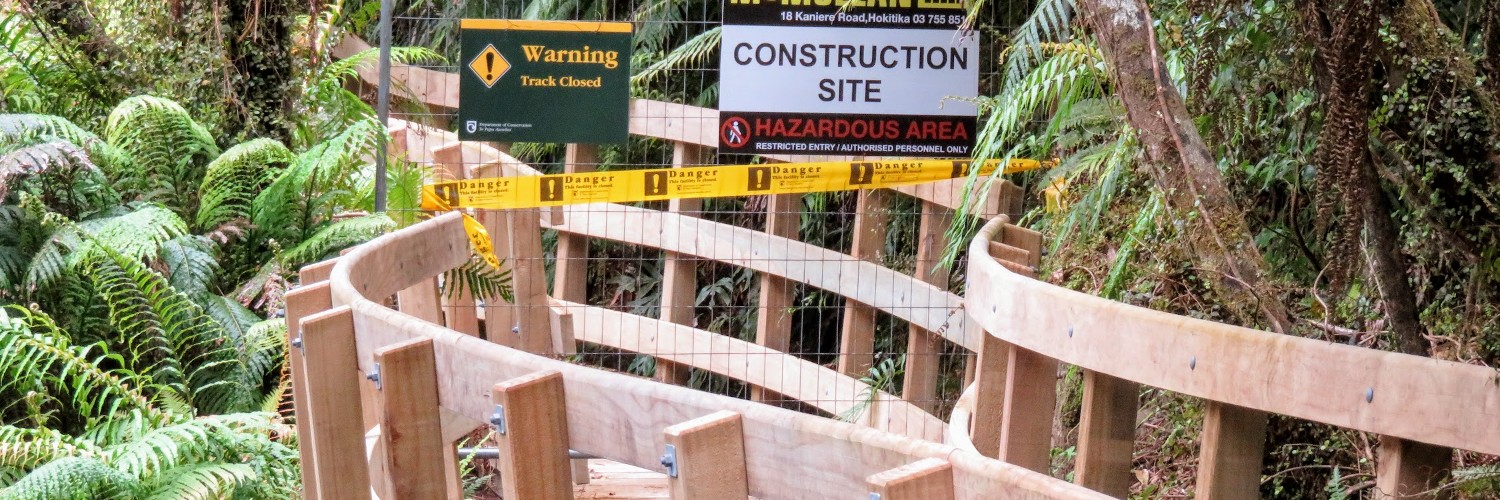Working with DOC
Many trail groups work closely with the Department of Conservation (DOC). DOC can provide help and advice on how to develop your trail in a way that supports our environment and protects nature. This page contains a list of resources that DOC provides which will help groups as you build and maintain and enhance your trail.
Contact a DOC office, or for visitor information, contact the local visitor centre or i-SITE, who will be able to assist. Many DOC offices do not have open public access for security reasons or manage a phone reception 8 hours a day. You can contact enquiries@doc.govt.nz, providing a brief explanation about which office you want to contact and why, and this information will be passed on.
This legislation establishes the Department of Conservation to manage all conservation land and other natural and historic resources. DOC’s role is to:
- conserve our natural and historic resources,
- advocate for the conservation of those resources,
- educate and promotional material relating to conservation
- And to the extent that it is not inconsistent with conservation, to foster the use of natural and historic resources for recreation and to allow their use for tourism.
DOC outlines how to start, improve or evaluate a conservation project. Get information on guidelines and best practices. If you want to run a project that includes Public Conservation Lands, then this involves entering into a community agreement with DOC.
Assess the impact of your project
All programmes should take into account the impact their proposed work will have on natural, cultural and historic conservation values.
You may be asked to do an Environmental Impact Assessment (EIA) or an Assessment of Environmental Effects – which is the same thing but different format. This is to make sure possible impacts on threatened species or rare ecosystems, heritage sites, culturally important sites or other users are considered and minimised. DOC will guide you on what you need to do.
Conservation Management Strategies
Conservation Management Strategies, Conservation Management Plans and National Park Management Plans are 10-year statutory plans. They provide management direction for specific areas of public conservation lands and waters. Trail-building groups need your trail to conform with the requirements of your local conservation management strategy.
Track construction and maintenance
Here are resources DOC uses for track construction and maintenance.
The Tracks and Outdoor Visitor Structures — NZ Handbook SNZ HB 8630:2004
This is what DOC uses as the standards for tracks and basic structures on tracks and encourages others to use these standards.
The DOC Track construction and maintenance guidelines
Guidelines cover constructing and maintaining tracks for walkers and mountain bikers in New Zealand. They include a guide for those in the field on how to build and maintain tracks. There is a shorter field guide version as well as the full manual.
Track Standards SNZ HB 8630:2004 — Standards New Zealand
These provide specifications for those responsible for designing, constructing, maintaining, or managing tracks and outdoor visitor structures. Using these specifications ensures that tracks and outdoor visitor structures provide the right level of service to meet visitor recreation and safety needs and will help protect the facilities and the environment from damage.
Standards for new and existing off-road cycle tracks on land managed by the Department of Conservation. Includes dual-use pedestrian and cycle tracks.
Each track-building group is different — you may wish to talk with your Regional Field Advisor, so you get up-to-date advice and knowledge.

